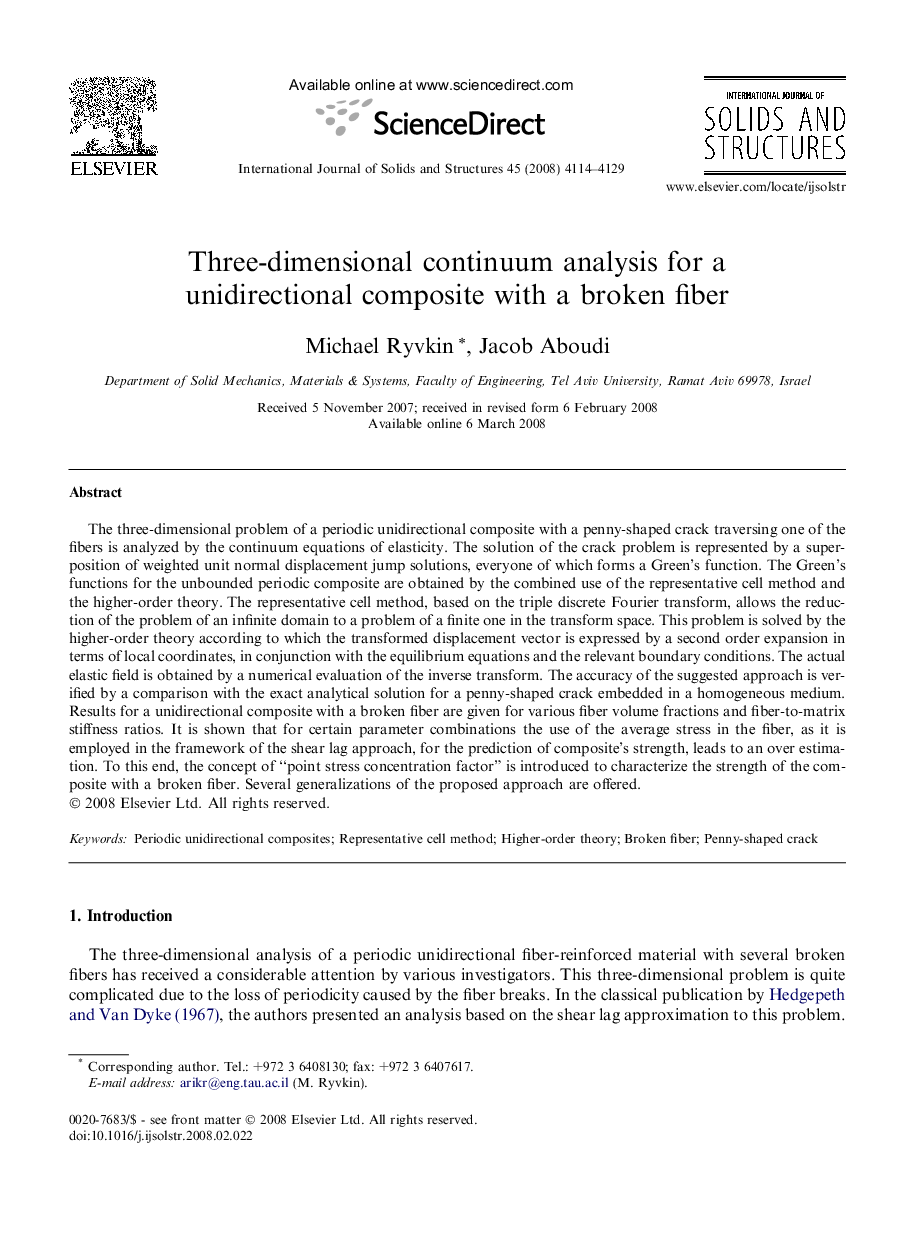| Article ID | Journal | Published Year | Pages | File Type |
|---|---|---|---|---|
| 279305 | International Journal of Solids and Structures | 2008 | 16 Pages |
The three-dimensional problem of a periodic unidirectional composite with a penny-shaped crack traversing one of the fibers is analyzed by the continuum equations of elasticity. The solution of the crack problem is represented by a superposition of weighted unit normal displacement jump solutions, everyone of which forms a Green’s function. The Green’s functions for the unbounded periodic composite are obtained by the combined use of the representative cell method and the higher-order theory. The representative cell method, based on the triple discrete Fourier transform, allows the reduction of the problem of an infinite domain to a problem of a finite one in the transform space. This problem is solved by the higher-order theory according to which the transformed displacement vector is expressed by a second order expansion in terms of local coordinates, in conjunction with the equilibrium equations and the relevant boundary conditions. The actual elastic field is obtained by a numerical evaluation of the inverse transform. The accuracy of the suggested approach is verified by a comparison with the exact analytical solution for a penny-shaped crack embedded in a homogeneous medium. Results for a unidirectional composite with a broken fiber are given for various fiber volume fractions and fiber-to-matrix stiffness ratios. It is shown that for certain parameter combinations the use of the average stress in the fiber, as it is employed in the framework of the shear lag approach, for the prediction of composite’s strength, leads to an over estimation. To this end, the concept of “point stress concentration factor” is introduced to characterize the strength of the composite with a broken fiber. Several generalizations of the proposed approach are offered.
